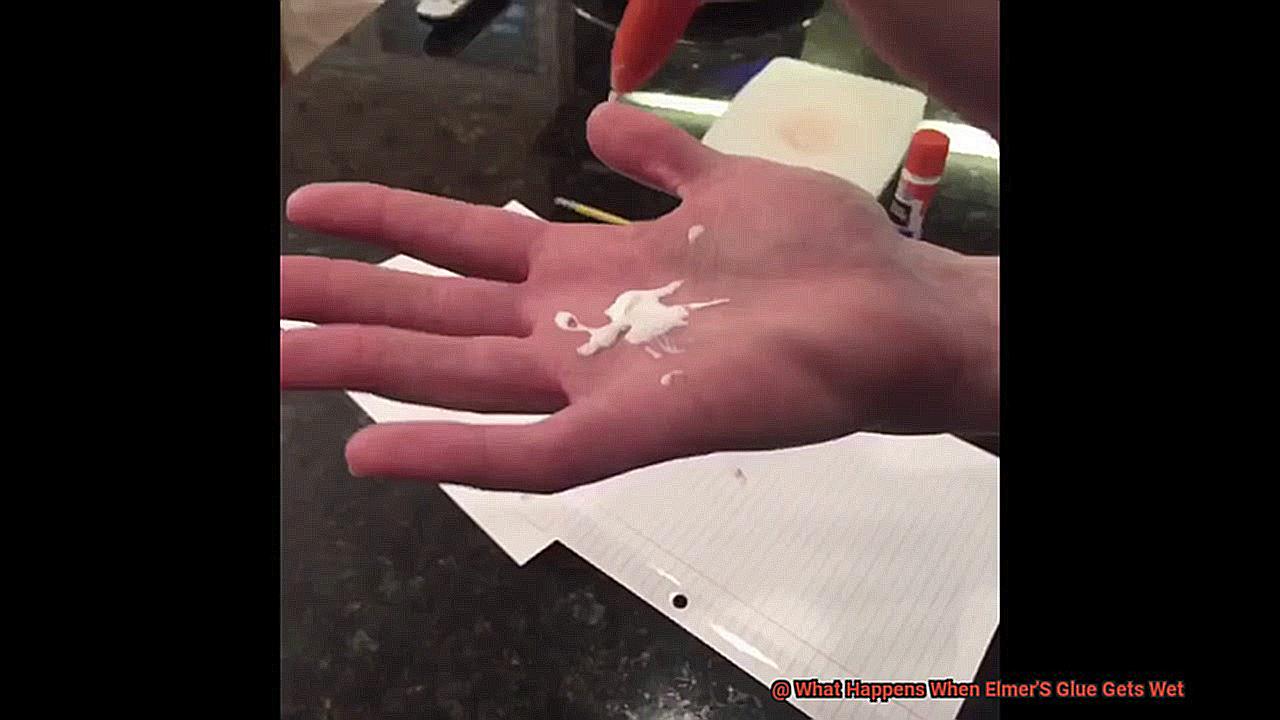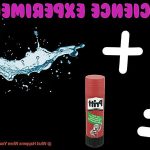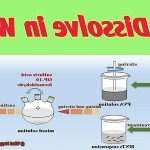Have you ever experienced the frustration of a craft project ruined by rain or an accidental spill? You’re not alone. If you’ve used Elmer’s glue in your projects, you might be wondering what happens when it gets wet.
Well, we’ve got the answers you need. Elmer’s glue is a versatile adhesive that is popular for its ability to bond materials cleanly and securely. But when it comes into contact with water, things can get messy.
In short, wetting Elmer’s glue causes it to lose its adhesive properties. The water breaks down the glue, causing it to liquefy and potentially drip or peel off the surface it was applied to. This means that projects exposed to moisture – like outdoor decorations or frequently handled items – are not suitable for this type of glue.
But wait, there’s more. Did you know that when Elmer’s glue gets wet, it can create a cloudy effect or even turn white? This is because the water causes the glue to expand and create a porous surface.
So next time you’re working on a project with Elmer’s glue, keep in mind that moisture is not its friend. And if you do accidentally get it wet, don’t panic – just be prepared for some unexpected effects.
What is Elmer’s Glue?
Contents
Elmer’s Glue is more than just another brand of adhesive. It’s a versatile, reliable glue that is commonly used in households and schools for crafting projects. What sets it apart from other adhesives is its water-based polymer composition, known as polyvinyl acetate (PVA). This means that it’s easily washable and non-toxic, making it an ideal choice for children’s crafts.
The history of Elmer’s Glue dates back to the 1940s when Paul H. Buehler developed the formula while working for the Borden Company. Initially called “Cascorez Glue,” it was primarily used for industrial applications. However, in the 1950s, the company rebranded the glue as “Elmer’s Glue-All” and marketed it to schools and households.
Today, Elmer’s Glue has become a household name and a go-to choice for many people due to its versatility. It comes in clear and white formulations and can be used for a wide range of applications, from paper crafts to woodworking. It can even be used as a temporary hold for fabrics.

While Elmer’s Glue is known for its reliability, it’s important to keep in mind its limitations. As a water-soluble polymer, it can break down when exposed to water through a chemical reaction called hydrolysis. This can weaken its adhesive properties over time.
What Happens When Elmer’s Glue Gets Wet?
Elmer’s glue is a water-based polyvinyl acetate adhesive that is perfect for all types of crafting projects. It’s non-toxic and easy to use, making it a popular choice among children and adults alike. However, when this superhero adhesive comes into contact with water, its powers start to weaken.
The glue molecules begin to break down and separate from each other when exposed to water. The extent of this breakdown depends on how much water the glue is exposed to. If only a little bit of water gets on the glue, it may not be affected too much. But if the glue is submerged in water or exposed to high levels of humidity, it can lose its adhesive strength and become weaker.
This happens because water interferes with the intermolecular forces between the glue molecules. These forces are what hold the glue together and allow it to form a strong bond with other surfaces. But when water enters the equation, it disrupts these forces and weakens the bond.
Unfortunately, wet Elmer’s glue doesn’t just lose its adhesive properties; it can also become cloudy or discolored. This is because the water causes the glue molecules to swell and stretch out of shape, altering their appearance.
So what can you do if you accidentally get some water on your glued surface? First, try to dry it off as soon as possible and avoid exposing it to any more moisture. Second, if you know that your project will be exposed to water in the future, consider using a different type of adhesive that is waterproof.
Hydrolysis: The Chemical Reaction Behind the Breakdown
The answer lies in a fascinating chemical reaction called hydrolysis.
In simple terms, hydrolysis occurs when water molecules break down the chemical bonds in a substance. For instance, in Elmer’s glue, the water molecules break down the bonds between the glue’s polymer chains. This breakdown results in a loss of adhesion, which can cause your project to discolour and swell.
The speed at which hydrolysis occurs depends on several factors, such as temperature and pH levels. The acidity or basicity of the water can also impact how quickly or slowly the glue breaks down. Acidic water will speed up hydrolysis, while basic water will slow it down.
It’s worth noting that hydrolysis is a reversible reaction. However, if the polymer chains in Elmer’s glue have broken down too much, it may not be possible to restore its adhesive properties fully. Additionally, not all types of glue react to hydrolysis in the same way as Elmer’s glue. Different types of glues have different chemical structures and may react differently when exposed to water.
Understanding how hydrolysis affects Elmer’s glue and other adhesives is crucial in comprehending why certain glues lose their adhesion over time. Moreover, this knowledge can help develop new types of adhesives that are resistant to hydrolysis and other forms of chemical breakdown.
Other Factors That Can Affect Elmer’s Glue When Wet
While we know that hydrolysis, the chemical reaction between water and the glue’s polymer chains, can cause the glue to lose its adhesive properties, there are other critical considerations to keep in mind.
Firstly, the amount of moisture present is crucial when it comes to Elmer’s glue. When exposed to too much water, the bond can weaken, rendering the glue less effective. To avoid this, it’s vital to ensure that your project is not excessively exposed to water when using Elmer’s glue.
Secondly, temperature fluctuations can also impact the performance of Elmer’s glue when wet. Extreme heat or cold can cause the glue to become brittle or lose its adhesive properties altogether. Therefore, it’s essential to store Elmer’s glue in a cool, dry place away from temperature fluctuations to maintain its effectiveness.
Thirdly, the type of surface on which you apply Elmer’s glue can also affect its performance when wet. Porous surfaces may absorb more moisture, making it difficult for the glue to adhere correctly. Additionally, certain materials may react negatively with Elmer’s glue when exposed to water, causing it to break down or become less effective.
Lastly, the age of Elmer’s glue can also impact its performance when wet. Over time, the glue may lose its bonding strength or become more susceptible to damage from moisture exposure. It’s crucial to check the expiration date of your glue before use and replace any older bottles for optimal results.
How to Prevent Mishaps with Elmer’s Glue
Elmer’s glue is a popular adhesive that can help bring your creative projects to life. However, if not used properly, mishaps can occur that can ruin your hard work. One common mishap is the glue getting wet and losing its adhesive properties. But fear not, here are some tips to prevent mishaps and ensure your projects stay intact for as long as possible.
Choose the Right Glue
The first step in preventing mishaps is to choose the right glue for your project. Elmer’s offers different types of glues, each with its unique properties. Some are water-resistant, while others are not. Before embarking on your project, read the label on the glue bottle and choose the right glue for your needs.
Consider the Surface
The surface you’re gluing can also affect the likelihood of water damage. If the surface is porous or has a high moisture content, such as wood or paper, it may be more susceptible to damage from moisture. In these cases, it may be necessary to use a waterproof glue or take extra precautions to keep the glue dry.
Apply Glue Evenly
Applying Elmer’s glue in a thin and even layer is crucial to prevent mishaps. Excess glue can take longer to dry and may not adhere as well to the surface. Moreover, too much glue can increase the risk of the glue coming into contact with moisture.
Store Your Glue Properly
Storing your Elmer’s glue correctly can also help prevent mishaps. Keep the glue in a cool, dry place and make sure that the cap is tightly sealed after each use. This will prevent air and moisture from getting inside and affecting the quality of the glue.
Dry It Out
If you accidentally get Elmer’s glue wet, don’t worry. Try to remove as much excess water as possible with a towel or cloth. Then, allow the glue to dry completely before attempting to use it again. If the glue has lost its adhesive properties, consider using a stronger adhesive or starting over with a new project.
Also Read: Is Elmer’s Glue Waterproof?
Conclusion
In conclusion, Elmer’s glue is a beloved adhesive that has become a household name for crafting projects. Its water-based polymer composition, known as polyvinyl acetate (PVA), makes it easy to use and safe for children’s crafts. But when it comes into contact with water, things can get messy.
Wetting Elmer’s glue causes it to lose its grip due to the chemical reaction called hydrolysis. The water breaks down the glue, causing it to liquefy and potentially drip or peel off the surface it was applied to. This means that projects exposed to moisture are not ideal for this type of glue.
Moreover, wet Elmer’s glue can take on a cloudy or discolored appearance because the water causes the glue molecules to swell and stretch out of shape, altering their texture.
To prevent mishaps with Elmer’s glue, choose the appropriate type of glue for your project and consider the surface you’re gluing. Apply the adhesive evenly and store it properly in a cool, dry place with a tightly sealed cap after each use. If you accidentally get Elmer’s glue wet, remove as much excess water as possible with a towel or cloth and allow it to dry completely before attempting to use it again.
In summary, while Elmer’s glue is an effective adhesive for crafting projects, it’s crucial to keep in mind its limitations when exposed to moisture.






